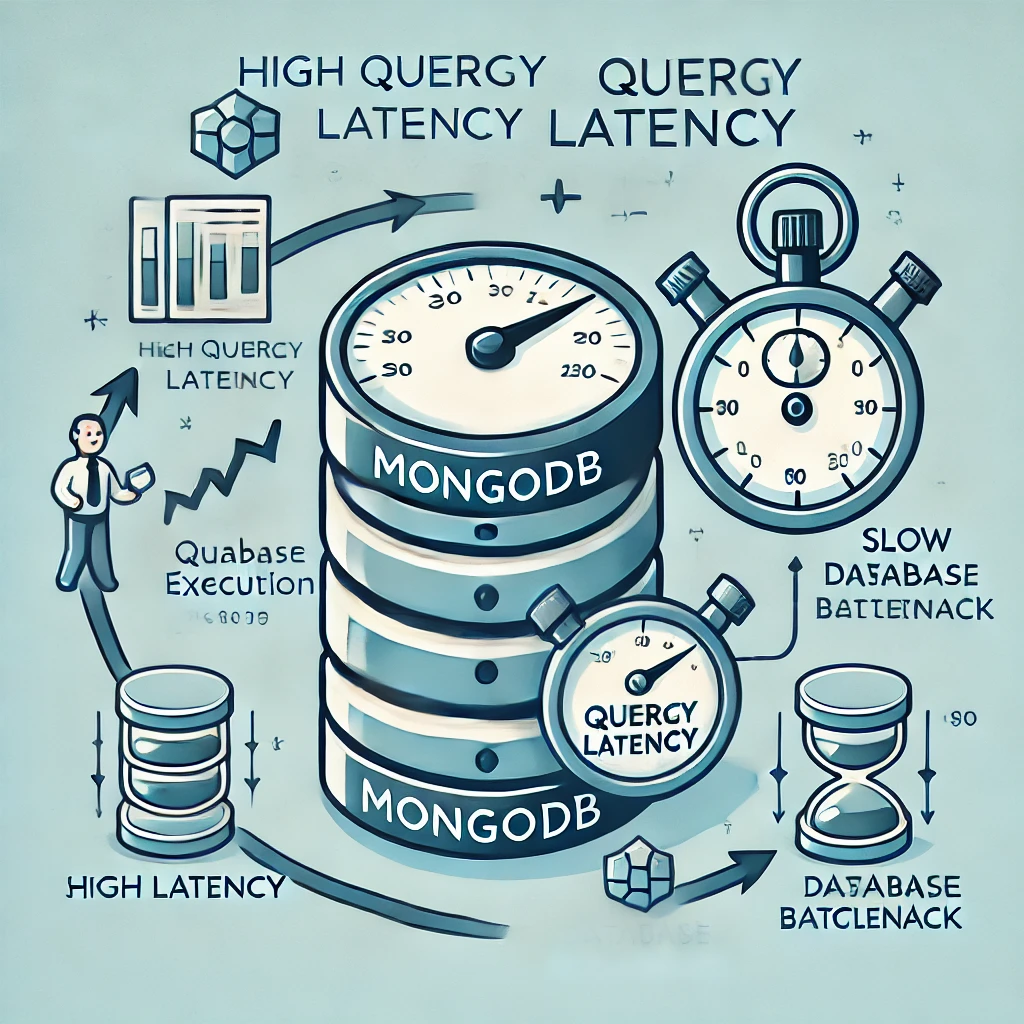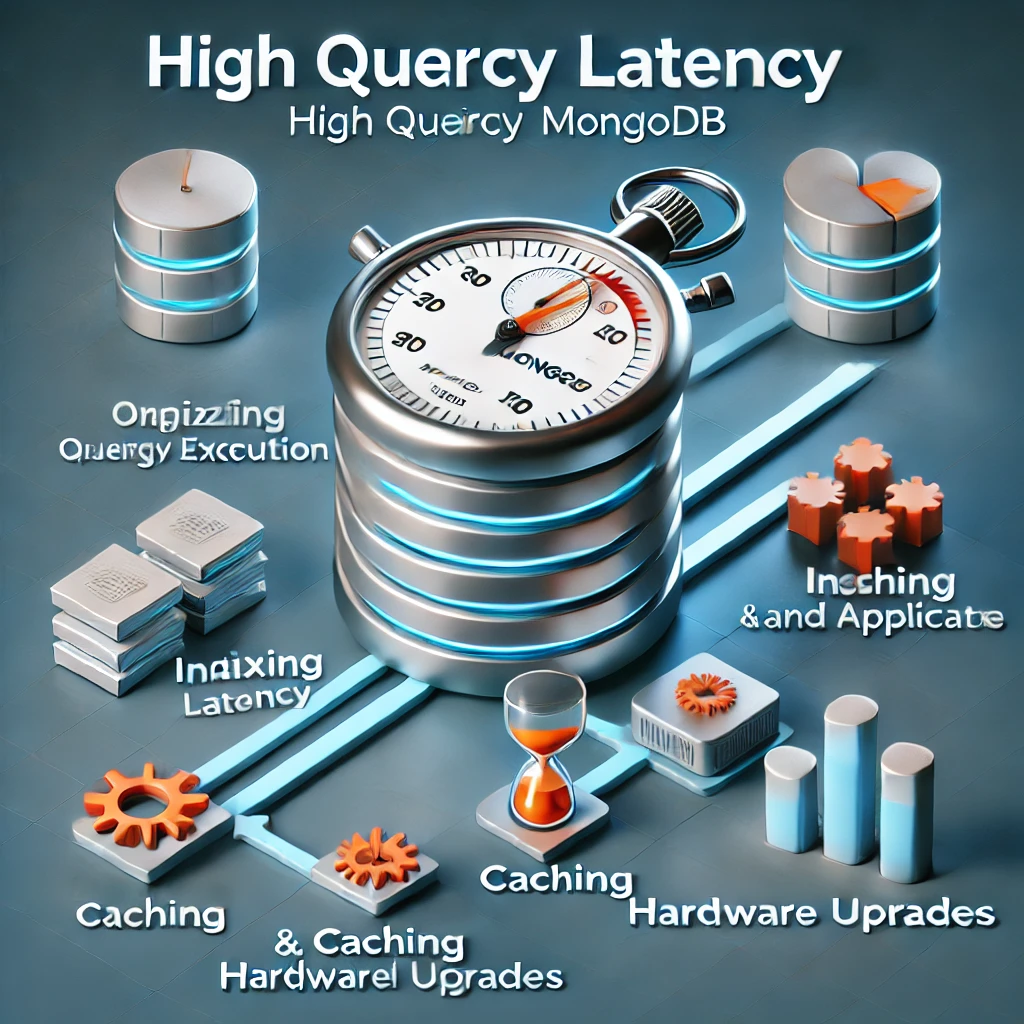Solving High Latency in Query Performance for MongoDB Monitoring
MongoDB is widely recognized for its ability to handle diverse workloads and large datasets efficiently. However, as the database scales or as application demands grow, query latency issues may arise. High query latency impacts application performance, user experience, and overall system reliability. In this article, we explore the root causes of high latency in MongoDB query performance and provide actionable solutions to optimize your database for peak efficiency.
Understanding High Query Latency
Query latency refers to the time it takes for MongoDB to execute a query and return the results. High latency occurs when this execution time becomes excessive, often leading to slower application responses and user dissatisfaction. To resolve this, you need to diagnose the underlying issues and implement targeted optimizations.

Causes of High Query Latency in MongoDB
Several factors contribute to high query latency in MongoDB, including:
Lack of Proper Indexing:
Queries that require full collection scans take significantly longer to execute.
Missing or inefficient indexes force MongoDB to scan all documents to find matching results.
Large Dataset Sizes:
As collections grow, the time required to process unindexed or poorly indexed queries increases.
Inefficient Query Design:
Complex or unoptimized queries may include unnecessary filters, joins, or aggregation stages.
High Concurrent Query Load:
When multiple queries compete for system resources, overall performance suffers.
Resource Bottlenecks:
Limited CPU, memory, or disk I/O capacity can lead to delays in query execution.
Sharding Misconfigurations:
Poor shard key selection can result in uneven data distribution and query hotspots.
Replication Delays:
Secondary nodes may lag behind the primary, leading to stale data reads or slower responses.
Server or Network Latency:
Physical distance or poor network configurations between application servers and MongoDB clusters increases response times.
Solutions to Address High Query Latency in MongoDB
Here are practical strategies to resolve high latency issues and optimize query performance:
1. Optimize Indexing
Indexes are essential for fast query execution. To optimize indexing:
Create the Right Indexes: Analyze your query patterns and create indexes on fields frequently used in filtering, sorting, and joins.
Use Compound Indexes: Combine multiple fields into a single index for queries that filter on multiple criteria.
Monitor Index Usage: Use the
explain()method to check whether a query uses an index or performs a full collection scan.Avoid Over-Indexing: Too many indexes can slow down write operations and increase storage requirements.
Example:
// Query that filters by 'status' and sorts by 'createdAt'
db.orders.createIndex({ status: 1, createdAt: -1 });2. Analyze and Optimize Queries
Poorly designed queries can cause high latency. To improve query design:
Use the Aggregation Framework: Break down complex queries into aggregation pipelines for efficient processing.
Limit Results: Retrieve only the required data using projection and
limit().Avoid Unnecessary Operations: Remove redundant fields or stages in queries.
Run ************************
explain(): Analyze query execution plans to identify slow stages and optimize them.
Example:
// Use projection to retrieve only the required fields
db.users.find({ age: { $gte: 25 } }, { name: 1, email: 1 });3. Monitor Query Performance
Regularly monitor query performance metrics to detect bottlenecks:
Slow Query Logs: Enable slow query logging to identify queries exceeding a certain execution time.
Monitoring Tools: Use tools like MongoDB Atlas, Percona Monitoring and Management (PMM), or Datadog to track query performance metrics.
Automation: Set up alerts for long-running queries.
4. Upgrade Hardware Resources
If resource limitations are causing latency, consider upgrading your infrastructure:
CPU: Use faster processors to handle compute-intensive queries.
Memory: Increase RAM to keep frequently accessed data in memory.
Disk I/O: Switch to SSDs for faster read and write operations.
5. Implement Connection Pooling
Excessive connections can overwhelm MongoDB and increase latency. Use connection pooling to optimize resource usage:
Set Pool Size: Configure your MongoDB driver to use an appropriate connection pool size.
Close Idle Connections: Ensure unused connections are closed promptly.
Example (Node.js):
const client = new MongoClient(uri, { poolSize: 50 });6. Partition Data with Sharding
For large datasets, sharding can improve query performance by distributing data across multiple servers:
Choose an Effective Shard Key: Select a shard key that distributes data evenly across shards.
Monitor Shard Balancing: Use MongoDB tools to ensure balanced data distribution.
Optimize Queries: Design queries to target specific shards rather than the entire cluster.
Example:
// Enable sharding for a collection
sh.enableSharding("myDatabase");
sh.shardCollection("myDatabase.myCollection", { userId: 1 });7. Optimize Replica Set Configuration
Replication can affect query latency, especially for read-heavy workloads:
Read from the Primary: For the most up-to-date data, configure reads from the primary node.
Dedicated Secondary Nodes: Use dedicated secondary nodes for read operations to reduce the load on the primary.
Monitor Replication Lag: Ensure secondaries are not significantly behind the primary.
8. Use Caching
Reduce query latency by caching frequently accessed data:
In-Memory Caching: Use caching solutions like Redis or Memcached to store query results.
MongoDB Built-In Cache: Optimize MongoDB’s internal cache by adjusting the WiredTiger cache size.
Application-Level Caching: Implement caching at the application level for specific queries.
9. Reduce Network Latency
If queries experience high latency due to network issues:
Deploy Clusters Closer to Applications: Reduce physical distance between application servers and MongoDB clusters.
Optimize Network Configurations: Ensure proper network bandwidth and low latency.
Use Compression: Enable network compression to reduce data transfer times.
10. Upgrade MongoDB Version
Newer MongoDB versions often include performance improvements and bug fixes:
Check Release Notes: Review MongoDB release notes for updates related to query performance.
Test Before Upgrading: Ensure compatibility with your application and test in a staging environment.

Best Practices for Long-Term Query Performance
To maintain optimal query performance over time:
Regularly review and update indexes based on changing query patterns.
Continuously monitor query performance metrics.
Scale infrastructure as your data and workload grow.
Implement automated testing for new queries to prevent performance regressions.
Train developers on MongoDB best practices for query design.
Conclusion
High query latency in MongoDB can significantly impact your application’s performance, but it is not an insurmountable challenge. By identifying the root causes and implementing the solutions outlined in this guide, you can ensure your queries execute efficiently and meet the demands of your users. Regular monitoring, proper indexing, hardware optimization, and query design are key to sustaining long-term performance.
If you need help diagnosing or solving query latency issues, contact us for expert assistance!
